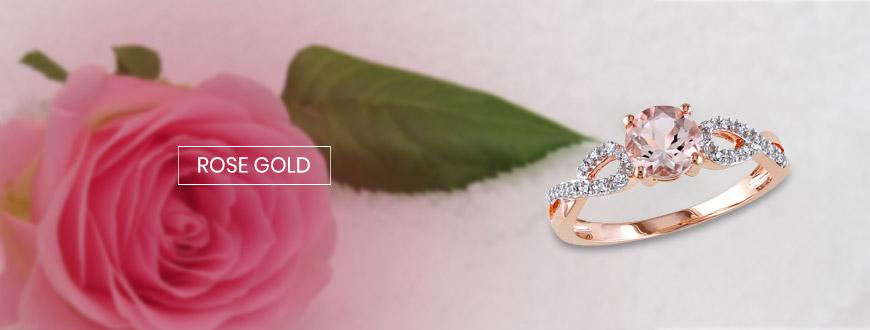Kalyan Wiki

Rose Gold
In India, gold is not merely an investment but a family heirloom. Gold jewellery is handed down from generation to generation. All auspicious occasions involve gold in one form or another. Moreover, it is a tangible asset and insurance in case of an unexpected financial crisis.
24 K pure gold is a very soft metal and hence cannot be used to make jewellery. Gold bars and gold coins are made with 24 K gold. Pure gold is alloyed with other metals such as Silver, Copper, Zinc, Nickel, Palladium etc. to make it more durable. Depending on the alloy, the main variations of gold are- yellow gold, white gold and rose gold.
Rose gold is also called as Pink Gold or Red Gold. It is an alloy of Gold, Silver and Copper and is available in different hues of red. The more the Copper content, redder is the gold. Rose gold jewellery is usually fabricated in 18 K gold and less. It is more durable than yellow or white gold.
18 K contains 75% gold while 14 K includes 58% gold. Since the gold content is less and Copper is an inexpensive metal, rose gold is much cheaper than yellow gold. This quality makes it more affordable and an ideal gift choice. The reddish pink hue also has a charming and romantic appeal and hence rose gold ring is a perfect gift for Valentine's Day.
With increasing Copper content and the resulting reddish hue, rose gold jewellery procures a classy vintage look making it an ideal gift for friends and family. Rose gold is a versatile metal and pairs well with diamonds or coloured gemstones.
The only drawback is that rose gold is not hypoallergenic. It can trigger allergic reactions in some folks who are allergic to Copper.







